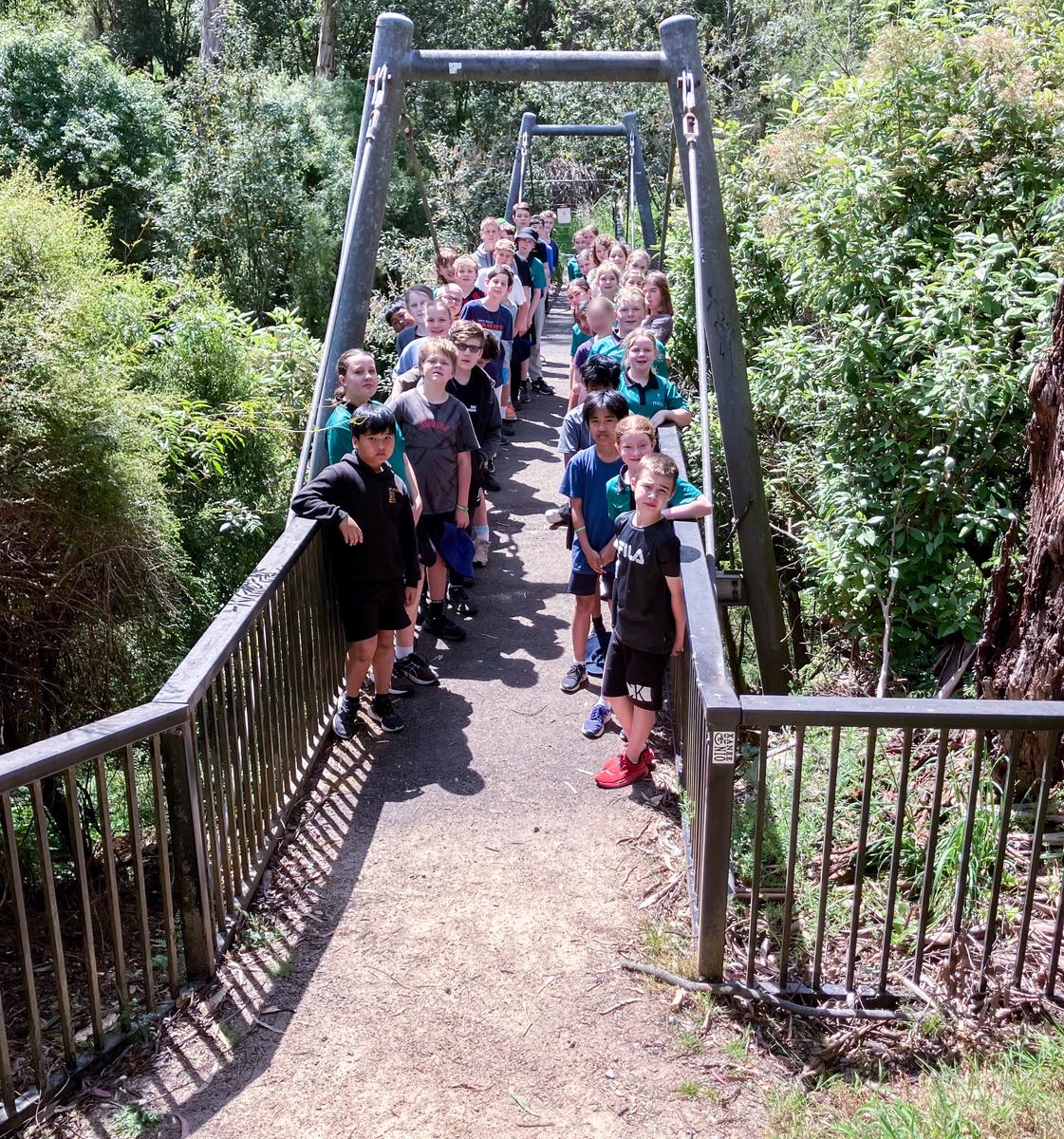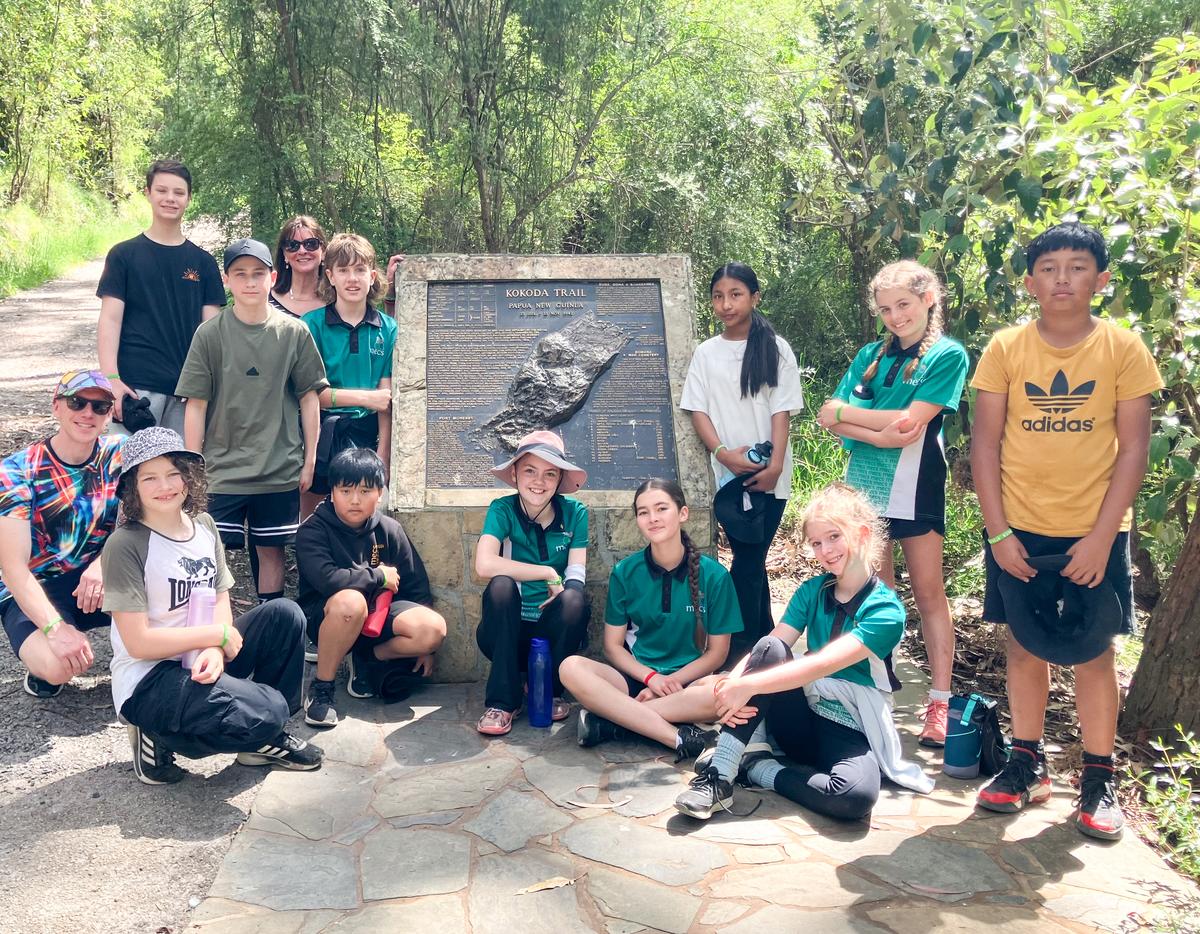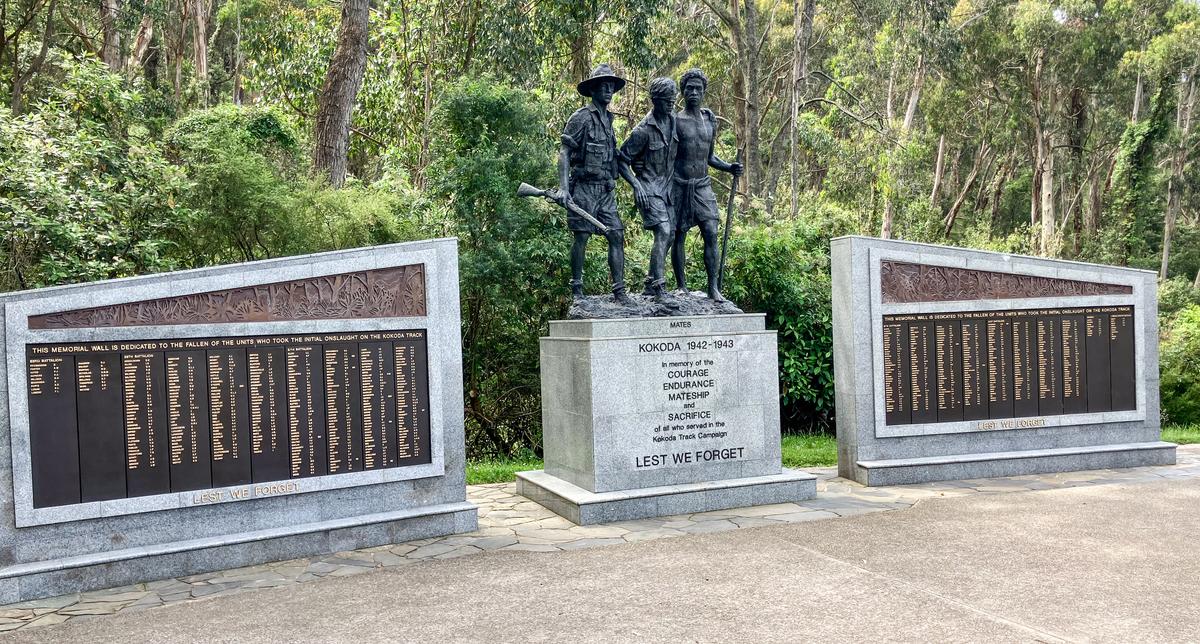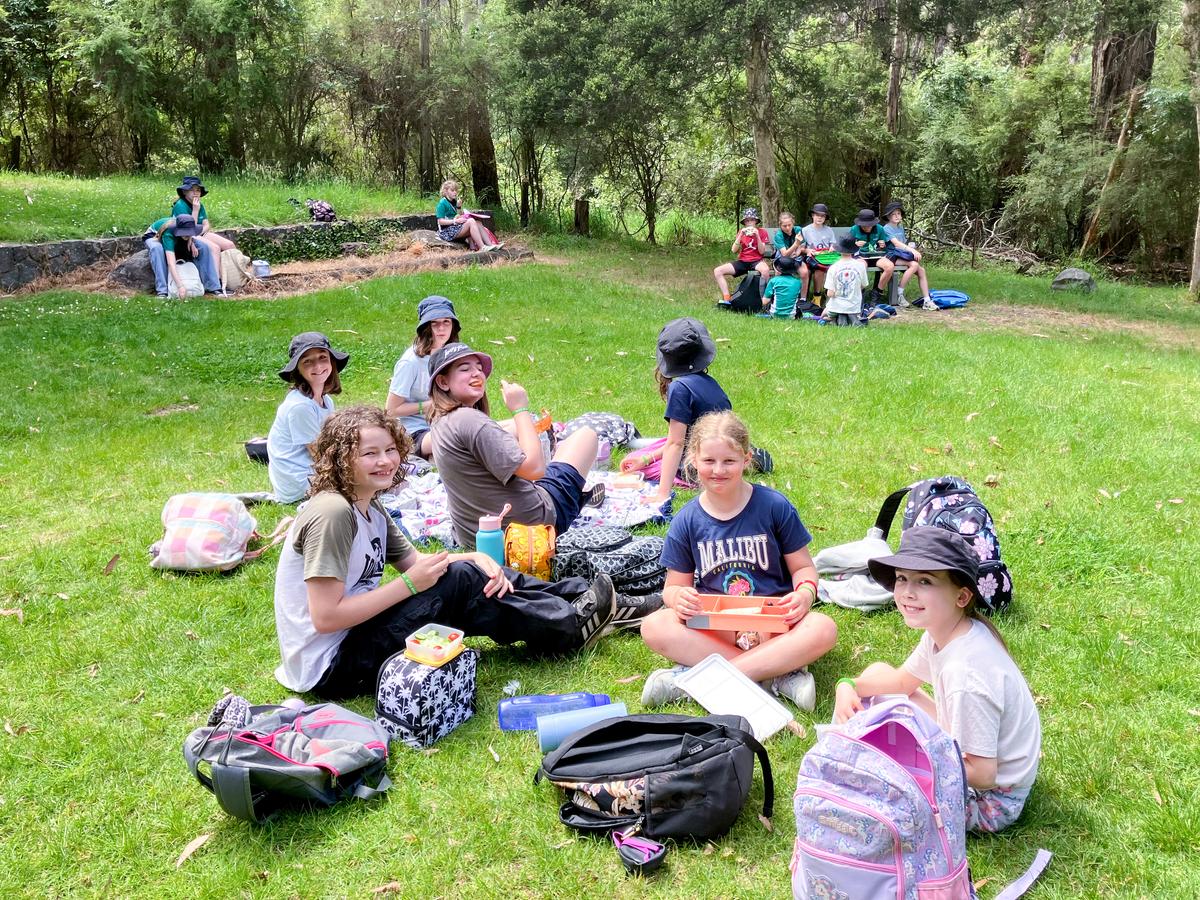Strong Hearts Strong Minds
News from the Primary School

Strong Hearts Strong Minds
News from the Primary School
What better way to learn than through real-life experience. For Remembrance Day, the Senior Primary students walked the 1000 Steps. They quickly understood how terrifying and difficult it would have been for Australian soldiers to trudge their way through such harsh terrain in order to keep our country from invasion during WW2. Students visited the memorial and saw that the pillars of Mateship, Endurance, Courage and Sacrifice have the same acronym as MECS and reflects the very existence of our Saviour, Jesus Christ.


























Created in the early 1900s, the 1000 Steps Walk was originally made from tree fern trunks laid along the wetter areas of the track to make the climb a little easier. These were replaced by wooden palings, and more permanent concrete steps were installed in 1950. The veterans of the Kokoda campaign adopted this park as their memorial site in 1998. The similarity of the walk to the first 100 metres of the Kokoda Track in Papua New Guinea resulted in the establishment of fourteen plaques along the walk, dedicated to the Australian Military Forces who fought and died on Kokoda. The 1000 Steps represent the ‘Golden Staircase,’ a name given by Australian soldiers to the 2000 steps cut by the Australian Army Engineers and others into the track between Uberi and Imita Ridge.
Senior Primary Team
Student writing:
It was a sunny bright day, perfect for going to the 1000 Steps and learning about how the Australian soldiers fought the Japanese to save Australia. I can’t believe the Australian soldiers had to walk 96km on the Kokoda Trail with all the mud and bugs. Some of them died of illnesses. There were 4 pillars there, one for Mateship, Endurance, Courage, and Sacrifice, which is the same as MECS. My favourite part of the trip was walking up the steps with my friends, seeing the view and the wonderful things that God made for us.
Lucy K
I was waiting on the bus both nervous and excited. I wondered to myself, “What if I get leeches”, “what if I get too tired?” Nervous thoughts filled my mind, but I quickly shook them away. As we reached the trail that led to the thousand steps I started to think that this excursion was actually going to be fun. After walking for about fifteen minutes, we finally reached the first step, and I knew this would be one of the most exhausting excursions I've ever been to. As I was a third of the way through, I started to get really tired, I took a sip of water out of my drink bottle and continued on the long journey. Halfway through the steps I started to see a beautiful view and I began to realise how beautiful my surroundings were. When we finally reached the top, we took a break to rest and chat with friends. After that we went back down where we saw the war memorials and took some photos. I could definitely say that this was one of the best (and exhausting) excursions ever.
Henry K
Walking up a heap of rocky steep stairs single file up to a magnificent view is an amazing thing to experience. Actually when you're walking up you think about the soldiers who walked up to the Kokoda Trail. Walking up the thousand steps was tricky but imagine instead of 2.5 kilometres it was 96 kilometres and on top of that sicknesses, mud, wet and cold weather and injuries just to go to the war. Not many finished the Kokoda trail because of many diseases, little food and water and not enough rest. Up the Kokoda trail we saw a stone with the fuzzy wuzzy angels on it. This told us information about what the Papuans did, like transporting stretchers and equipment.
The 1000 steps was made in the 1900s to represent a little bit of the Kokoda trail. I think it is important to have a place to know a little bit of what it felt like for the soldiers in the war to be more appreciative of what they did for us. I think doing the 1000 steps was the best and I hope I can do it again.
Ailee G
When we walked almost half-way up the steps I was so hungry that the only thing I could think of was when we got back down and started eating food. I thought this was a good real life experience of what it would have been like on the real Kokoda trail. The army soldiers must have been starving. Sweat was dripping from my eyebrow. It was sticky and squishy on the single file trail.
When we started going down, the hill was so steep that I had to bend my knees to stop myself from slipping down the hill. When we got to the bottom of the hill I was so relieved to have food. Even having my banana was like heaven. My calves were burning from all the walking but it really did give me a good picture of what it was like having to hike the Kokoda trail.
Isaiah G
The 1000 Steps was a good opportunity to experience what the soldiers in the Kokoda Trail Campaign went through. It wasn't that hard, but it was only a small amount of what they had to do.
The steps were narrow, so it was hard to go quickly. The five pillars at the bottom were a powerful message because what the pillars said was powerful: Sacrifice, Courage, Mateship, and Endurance. What the soldiers went through was crazy and they were willing to sacrifice themselves to help everyone in Australia.
The trail was steep and the conditions that soldiers did it in were way worse. My Great-Grandpa served in WW2 and was gas bombed but he survived and went back to Australia. He got treated in a hospital and went back to war. He came back when the war finished and lived to be 102 years old.
In conclusion, I think that the excursion was a meaningful trip that helped us learn about the sacrifices the soldiers made to protect Australia.
LEST WE FORGET
Simeon C
The Kokoda Trail is a big part of Remembrance Day because the people in the Australian army died for Australia. Japan was trying to invade Kokoda, which is a village in Papua New Guinea. The Kokoda Trail is 96 Kilometres long but we went to the 1000 Steps which is a replica of the Kokoda Trail, which is only a small snippet of the distance they travelled. Our trip helped us to think about the sacrifice that the soldiers in WWII made.
We are learning about the 1000 steps at school. Our soldiers who were on the Kokoda trail showed endurance by keeping going and not stopping, even though it would have been tough. They took risks which paid off because Japan was not successful in capturing Papua, or any other part of Australia.
Mateship was shown by the villagers on the Kokoda Trail. They were also known as the Fuzzy Wuzzy Angels. They helped the Australian soldiers when they were hurt and they were the reason why the soldiers came back alive. The Fuzzy Wuzzy Angels carried the soldiers in heavy terrain, even when they were on stretchers.
The soldiers showed courage when they crossed the bridge when the Japanese soldiers were sleeping on the job. When Australian soldiers got to the next bridge, those Japanese forces were still awake. They probably were very frightened as they approached the Japanese and found them there. The courage they faced was incredible considering it was probably pitch black.
Over 600 Australian soldiers died for our country in the four months of fighting on the Kokoda trail. 1000 soldiers were injured for life and over 4000 soldiers got sick. This is a story of incredible bravery, and sacrifice.
At the 1000 steps it was a fun hike as we learned about the Kokoda trail and how all of the soldiers died. This was probably one of the easiest parts compared to the Kokoda trail. After we came down from the hike, we went to see the four pillars labelled Mateship, Endurance, Courage and Sacrifice. These four words are also listed at the Australian War Memorial at Isurava in Papua New Guinea. We did this hike, Lest We Forget.
Levi K